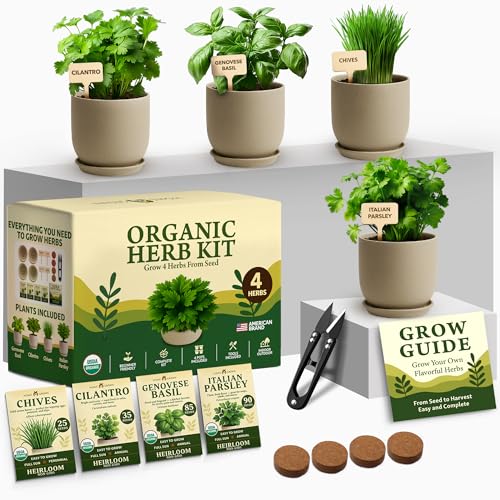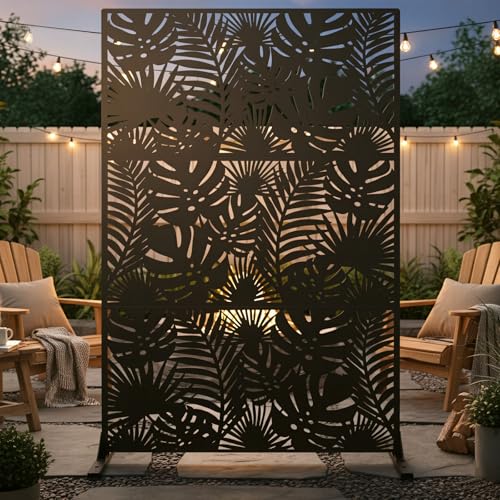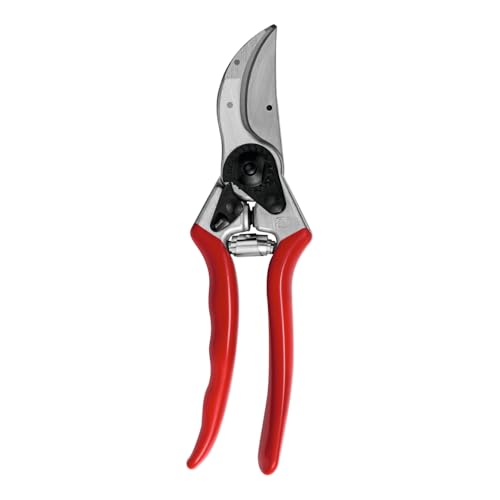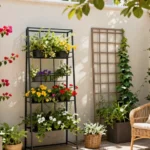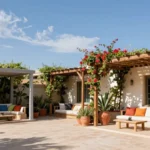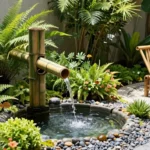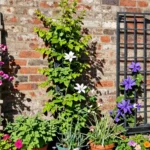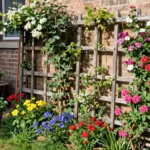We’ve all been there – staring at our tiny backyard wondering how we’ll ever transform that cramped space into the garden oasis we’ve been dreaming about. The good news? Small spaces pack incredible potential when you know the right tricks and techniques to maximize every square inch.
Whether you’re dealing with a postage stamp-sized patio or a narrow strip of grass behind your townhouse, we’re about to show you how strategic planning and creative answers can turn even the tiniest outdoor area into a thriving garden paradise. From vertical growing systems that reach for the sky to clever container arrangements that multiply your planting space, there’s no shortage of ways to grow big in small places.
The best part? Most of these small backyard garden ideas won’t expensive or require advanced gardening skills. We’ll walk you through practical answers that deliver maximum impact with minimal effort, proving that size doesn’t determine success when it comes to creating your perfect garden retreat.
Maximize Vertical Space With Climbing Plants and Trellises
Vertical growing transforms limited ground space into productive growing areas that reach skyward. Smart use of walls and upright structures can triple your planting capacity without expanding your garden’s footprint.
Install Wall-Mounted Planters for Herbs and Flowers
Wall-mounted planters attach directly to fences, exterior walls, or garden structures to create instant growing space above ground level. We recommend choosing planters with built-in drainage systems and mounting brackets that can support 15-20 pounds when filled with soil and water.
Popular wall planter options include:
- Cedar window boxes for herbs like basil, oregano, and thyme
- Metal rail planters for colorful annuals such as petunias and marigolds
- Modular plastic systems for cascading flowers like trailing lobelia
- Recycled tire planters for larger plants including cherry tomatoes
Position these planters at comfortable reaching height, typically 3-4 feet from ground level. South-facing walls provide 6-8 hours of direct sunlight for most herbs and flowering plants. Consider installing a drip irrigation system for consistent watering without daily maintenance.
Create Living Walls Using Pocket Planters
Pocket planters stack vertically to form dense growing surfaces that maximize plant density per square foot. These fabric or felt systems hold multiple plants in individual pockets while sharing a common water distribution network.
Living wall systems work exceptionally well for:
- Strawberry plants producing 2-3 pounds of fruit per vertical square foot
- Lettuce varieties yielding fresh greens every 30-45 days
- Succulents requiring minimal water and maintenance
- Annual flowers creating colorful displays throughout growing season
Install pocket planters on sturdy frames or existing fence structures that can support 8-12 pounds per square foot. Water from the top pocket and allow gravity to distribute moisture through lower levels. This method uses 40% less water than traditional container gardening while supporting 3 times more plants in the same area.
Build Sturdy Trellises for Vining Vegetables
Trellises provide essential support for climbing vegetables that produce higher yields when grown vertically rather than sprawling horizontally. Strong trellis construction prevents plant damage during heavy fruit production and severe weather conditions.
Effective trellis materials and dimensions:
| Material | Height | Width | Weight Capacity | Best For |
|---|---|---|---|---|
| Cedar posts with wire mesh | 6-8 feet | 4-6 feet | 25-40 lbs | Beans, peas, cucumbers |
| Bamboo poles with twine | 5-7 feet | 3-4 feet | 15-25 lbs | Tomatoes, pole beans |
| Metal T-posts with netting | 7-9 feet | 6-8 feet | 40-60 lbs | Melons, squash, gourds |
Space trellis posts 6-8 feet apart and anchor them 18-24 inches deep for stability. Vining vegetables like pole beans can produce 50% more yield per plant when properly supported compared to bush varieties. Install trellises before planting to avoid disturbing root systems later in the growing season.
Design Multi-Level Container Gardens for Maximum Impact
Building on our vertical growing strategies, we can create stunning visual depth through strategic container placement that maximizes every square foot of garden space.
Choose Containers of Varying Heights and Sizes
We achieve dramatic visual impact by selecting containers in different dimensions that create natural tiers throughout our garden space. Terra-cotta pots work exceptionally well when arranged in stacks or tiers, allowing us to save precious ground space while maintaining accessibility for plant care.
Container Size Strategy:
- Large containers (18+ inches): Foundation level for statement plants
- Medium containers (12-18 inches): Mid-tier for seasonal flowers and herbs
- Small containers (6-12 inches): Top level for trailing plants and accents
We can coordinate colors across our tiered arrangement by planting flowers in rainbow-like patterns that flow from one container level to the next. This approach transforms a simple collection of pots into a cohesive garden design that draws the eye upward and creates the illusion of expanded space.
Layer Plants by Growth Patterns and Sun Requirements
We optimize plant health and visual appeal by positioning species according to their natural growth habits and light needs. Taller plants that thrive in full sun belong at the back or top tiers of our arrangement, where they won’t cast shadows on smaller specimens below.
Strategic Plant Placement:
- Top tier: Sun-loving tall plants like ornamental grasses or upright herbs
- Middle tier: Medium-height flowering plants and compact shrubs
- Bottom tier: Shade-tolerant ground covers and trailing varieties
This layering technique mimics natural ecosystems where plants have evolved to occupy exact niches. We ensure each plant receives optimal light exposure while creating a lush, full appearance that makes our small garden feel abundant and well-established.
Incorporate Wheeled Planters for Flexible Arrangements
We add mobility to our container garden by using wheeled planters that allow us to reposition plants based on seasonal changes or evolving sun patterns. Converting an old wheelbarrow into a movable garden bed creates both rustic charm and practical functionality for our space.
Mobile Container Benefits:
- Seasonal repositioning for optimal sun exposure
- Easy rearrangement for entertaining or maintenance
- Protection during extreme weather conditions
- Accessibility for elderly or mobility-limited gardeners
We can find wheeled plant caddies at most garden centers, or create our own by adding heavy-duty casters to wooden boxes or plastic containers. This flexibility lets us customize our garden layout throughout the growing season and maximize the use of our limited square footage.
Transform Unused Corners Into Productive Growing Spaces
We can turn those forgotten corners and awkward spaces into thriving garden areas using strategic container placement and raised bed construction.
Convert Side Yards Into Narrow Vegetable Strips
Side yards offer excellent opportunities for creating long vegetable strips that maximize sun exposure throughout the day. These narrow pathways alongside our homes become productive micro-gardens when we install raised beds that improve soil drainage and reduce tilling work. Converting these spaces works particularly well for beginner gardeners since the contained areas stay manageable and accessible.
Vegetables like lettuce, spinach, and herbs thrive in these strip configurations, especially when we add vertical elements such as trellises along fence lines. Climbing plants like tomatoes benefit from the air circulation these narrow spaces provide while keeping our garden organized and tidy. We can also espalier fruit trees along these strips to create structured growing areas that produce food in compact forms.
Use Fence Lines for Espalier Fruit Trees
Fence lines provide natural support structures for training fruit trees to grow flat against vertical surfaces. Espaliered trees save important space while adding decorative elements to our small backyard designs. This technique works exceptionally well for apples, pears, and stone fruits that adapt to structured growing patterns.
Training trees against fences creates opportunities for mounting additional features like chalkboards or vertical gardens that increase functionality. We can combine climbing plants with espaliered trees to maximize our fence space usage. Vines and trailing plants work well alongside trained fruit trees, creating layered growing systems that produce food while improving privacy.
Create Cozy Seating Areas Surrounded by Plants
Framing seating areas with plants transforms small backyards into relaxing outdoor retreats. We achieve this by positioning terra-cotta pots in tiered displays around seating zones, creating natural boundaries that feel intimate and inviting. Comfortable cushions and colorful accents improve the ambiance while pergolas or trellises with climbing vines provide shade and privacy.
Adding focal points like fire pits, water features, or outdoor rugs enhances these planted seating areas significantly. Container gardens arranged around seating create flexible arrangements that we can modify seasonally. Plants in varying heights surrounding our seating areas create visual interest while establishing cozy outdoor rooms within larger garden spaces.
Implement Square Foot Gardening for Efficient Space Use
Square foot gardening revolutionizes small backyard spaces by organizing them into precise 1-foot by 1-foot squares within raised beds. This method maximizes our growing potential while reducing costs by 50%, space usage by 20%, water consumption by 90%, and labor by 98%.
Divide Growing Areas Into Manageable Sections
Building raised beds 6 to 12 inches high creates the foundation for our square foot system. We construct these beds from untreated cedar or pine, keeping them no larger than 4×4 or 4×8 feet for easy access from all sides. Each bed gets divided into individual squares using a grid system that eliminates wasted space.
Positioning our beds strategically maximizes sunlight exposure throughout the day. We fill them with Mel Bartholomew’s special soilless mix containing equal parts compost, peat moss, and vermiculite. This nutrient-rich combination provides excellent drainage while supporting intensive planting.
Managing our grid sections becomes effortless when we assign exact crops to each square. We plant according to size requirements: 1 extra-large plant like vine tomatoes per square, 4 large plants such as bush tomatoes or cabbage, 9 medium plants like lettuce heads, or 16 small plants including carrots.
Rotate Crops Seasonally for Continuous Harvests
Rotating crops prevents soil nutrient depletion and reduces pest buildup in our small garden squares. We change plant types in each section every season, planning early-season crops like lettuce and peas, mid-season vegetables such as tomatoes and peppers, and late-season plants including kale and Brussels sprouts.
Scheduling our plantings creates continuous harvests from spring through fall. We start cool-season crops in designated squares during early spring, then transition those same spaces to warm-season vegetables once temperatures rise. Fall brings another rotation opportunity as we replace summer crops with cold-hardy varieties.
Planning prevents competition between plants as we carefully space them according to their light and nutrient requirements. We prune regularly and monitor growth patterns to ensure each square produces optimally without overcrowding neighboring plants.
Combine Companion Plants in Each Square
Pairing beneficial plants within our squares enhances productivity and natural pest control. We plant basil near tomatoes to improve flavor and deter harmful insects, while combining lettuce with taller plants that provide afternoon shade during hot summer months.
Maximizing space involves strategic combinations that consider growth habits and timing. We interplant quick-growing radishes between slower-developing carrots, harvesting the radishes before carrots need full space. Vertical elements like small trellises support climbing plants while ground-level companions fill remaining square footage.
Selecting compatible plants improves overall garden health through natural relationships. We pair nitrogen-fixing beans with heavy feeders like corn and squash, creating the traditional “Three Sisters” combination that supports each plant’s nutritional needs while maximizing our square foot yields.
Incorporate Raised Beds for Better Soil Control
Raised garden beds revolutionize soil management by allowing complete control over soil composition and drainage conditions. We can customize soil mixtures specifically for our plants’ needs while eliminating the challenges of poor native soil quality.
Build Custom-Sized Beds to Fit Your Space
Custom-sized raised beds maximize every square inch of our small backyard spaces through strategic design planning. Multi-level bed configurations work perfectly for sloped areas, while border gardens use narrow spaces along fences or walkways effectively. Twin bed arrangements fit rectangular spaces ideally, and trio bed layouts accommodate longer garden areas with ease.
Square backyards benefit from classic four-bed designs that create defined pathways and organized growing zones. We can incorporate seating elements directly into bed edges, transforming functional growing spaces into comfortable garden retreats. Materials like wood, metal, or brick offer different aesthetic options while providing the structural support our plants need.
Space optimization becomes simple when we design beds around existing sunlight patterns and accessibility requirements. Narrow beds work best along property lines, while wider configurations suit central garden areas where we can access plants from multiple sides.
Select Appropriate Soil Mixes for Different Plants
Soil customization gives us the power to create perfect growing conditions for exact plant categories. Vegetable gardens thrive in soil mixes containing 40% compost, 30% topsoil, and 30% organic matter like aged manure or leaf mold. Herb gardens prefer well-draining mixtures with added perlite or coarse sand to prevent root rot.
Flower beds benefit from balanced soil combinations that include slow-release fertilizer granules mixed throughout the growing medium. We can adjust pH levels by incorporating lime for alkaline-loving plants or sulfur for acid-preferring species like blueberries.
Root vegetables require loose, sandy soil mixtures that allow proper development, while leafy greens flourish in nutrient-rich combinations with higher nitrogen content. This targeted approach eliminates the guesswork involved with native soil amendments and produces consistently better growing results.
Add Built-In Irrigation Systems for Easy Maintenance
Built-in irrigation systems transform garden maintenance from daily chores into automated processes. Drip irrigation lines deliver water directly to plant root zones, reducing water waste by up to 50% compared to traditional watering methods. Soaker hoses work exceptionally well in raised beds because they distribute moisture evenly across the entire growing surface.
Timer-controlled systems ensure consistent watering schedules even during busy periods or vacation absences. We can install moisture sensors that automatically adjust watering frequency based on soil conditions, preventing both drought stress and overwatering issues.
Installation becomes straightforward when we incorporate irrigation during bed construction rather than retrofitting existing gardens. PVC pipes with drilled holes create effective DIY soaker systems, while commercial drip tape offers professional-grade water distribution for larger bed installations.
Create Themed Garden Zones for Visual Interest
Dividing your small backyard into distinct themed zones transforms limited space into a visually compelling garden retreat. Strategic zoning creates depth while serving exact purposes that enhance both functionality and aesthetic appeal.
Design Dedicated Herb and Culinary Gardens
Raised beds provide the perfect foundation for herb gardens in small spaces. These elevated growing areas improve soil drainage while making maintenance easier for daily cooking needs. Vertical planters mounted on walls or fences save precious ground space while keeping herbs within arm’s reach of your kitchen.
Terra-cotta pots arranged in tiered displays create an attractive herb showcase. Stack different sized containers to maximize growing space while providing easy access for harvesting. Group culinary plants like basil, oregano, and thyme together to streamline your cooking preparations.
Wall mounted planters transform vertical surfaces into productive herb gardens. Install cedar window boxes or metal rail planters along fence lines to create living spice racks. Position these planters where they’ll receive 6-8 hours of daily sunlight for optimal herb growth.
Establish Butterfly and Pollinator-Friendly Areas
Nectar rich flowers planted in dedicated sections attract butterflies throughout the growing season. Choose native flowering plants that bloom at different times to provide continuous food sources from spring through fall. Mix these pollinator magnets within existing themed zones to add movement and life to your garden space.
Butterfly gardens require minimal space but maximum impact when properly planned. Create small clusters of flowering plants rather than scattered individual specimens to make resources more visible to visiting pollinators. Include host plants like milkweed alongside nectar sources to support complete butterfly lifecycles.
Native flowering plants support local ecology while reducing maintenance requirements. These adapted species thrive in your exact climate conditions without extensive watering or fertilizing. Position pollinator areas where you can observe butterfly activity from seating areas or windows.
Develop Seasonal Color Gardens for Year-Round Beauty
Color themed flower beds provide visual interest across all four seasons. Plant tulips and daffodils for spring color, vibrant lilies for summer displays, and chrysanthemums for autumn beauty. Use raised beds and containers to easily rotate seasonal plantings without disturbing permanent garden structure.
Seasonal container gardens offer flexibility for year round color changes. Switch out annuals in decorative pots to match each season’s palette while maintaining consistent visual anchors. Large containers can showcase statement plants while smaller pots add accent colors throughout your themed zones.
Decorative elements enhance seasonal charm beyond plant selections alone. Add sun catchers during summer months and colorful planters that complement seasonal blooms. These accessories create focal points that tie themed zones together while extending visual interest during plant dormancy periods.
Utilize Hanging Gardens and Suspended Planters
Suspended planters transform unused overhead space into productive growing areas while leaving ground space open for seating and activities. We can create stunning cascading displays that draw the eye upward and add visual depth to even the smallest backyards.
Install Ceiling-Mounted Growing Systems for Patios
Ceiling-mounted garden systems maximize vertical space by utilizing overhead areas in covered patios and outdoor structures. We recommend installing hooks or rails directly into ceiling beams to support lightweight planter boxes filled with herbs, small vegetables, or trailing flowers.
Position these systems close to kitchen areas for easy access to culinary herbs like basil, oregano, and thyme. Install multiple mounting points at varying heights to create visual interest while ensuring adequate sunlight reaches each planter.
Safety considerations include using weight-rated hardware that can support both the planter and fully saturated soil. Check mounting points regularly for signs of stress or weather damage to prevent accidents.
Create Tiered Hanging Arrangements for Cascading Plants
Tiered hanging gardens use multiple levels of suspended planters to create abundant greenery in minimal floor space. Arrange planters at different heights using adjustable chains or ropes to form natural cascading arrangements.
Select trailing plants like petunias, ferns, or ivy to enhance the cascading effect and create living curtains of greenery. Combine various pot sizes within each tier to add visual dimension and accommodate different plant root systems.
Install these arrangements on fence posts, pergola beams, or dedicated hanging structures to create privacy screens while maximizing growing space. Position taller tiers toward the back and shorter ones in front to ensure all plants receive adequate sunlight.
Choose Lightweight Materials for Overhead Gardens
Lightweight materials reduce strain on mounting systems while ensuring safe installation of overhead planters. We prefer plastic, resin, or thin metal containers that offer durability without excessive weight when filled with soil and water.
Fiberglass planters provide excellent weather resistance and come in various colors to complement outdoor decor. Coconut fiber liners in wire baskets create attractive natural looks while maintaining lightweight properties essential for hanging applications.
Avoid heavy ceramic or concrete planters for overhead installations unless mounting systems are specifically engineered for substantial weight loads. Select containers with built-in drainage holes or saucers to prevent water damage to underlying surfaces and structures.
Integrate Edible Landscaping for Dual Purpose Plants
We can transform our small backyard gardens by combining beauty with food production through strategic plant selections. Edible landscaping maximizes our limited space while providing both visual appeal and practical harvests.
Replace Traditional Shrubs With Berry Bushes
Berry bushes offer exceptional value in small gardens by serving as natural borders while producing delicious fruit. Black raspberries create stunning living screens that enhance privacy and add seasonal interest to compact spaces. Strawberry plants form attractive ground cover that yields sweet berries throughout the growing season.
We’ll find these productive alternatives far more rewarding than traditional ornamental shrubs. Berry bushes provide texture and color changes throughout the year while supplying fresh fruit for our kitchen. Perennial berry varieties reduce our maintenance workload since they don’t require annual replanting like many decorative plants.
Strategic placement of berry bushes creates natural boundaries between different garden zones. We can use them to frame seating areas or define walkways while ensuring easy access for harvesting. Their varied heights and growing habits add visual depth to our garden design.
Plant Ornamental Vegetables for Beauty and Function
Ornamental vegetables bring striking visual elements to our small gardens while producing edible harvests. Rainbow chard displays vibrant stems in colors ranging from bright yellow to deep red. Purple cabbage creates dramatic focal points with its rich burgundy leaves and compact growing habit.
Red stemmed kale adds architectural interest with its deeply textured foliage and striking color contrast. We can integrate these vegetables directly into our flower beds alongside traditional ornamentals. Their diverse colors and leaf shapes provide season long visual interest that rivals purely decorative plants.
These functional beauties work exceptionally well as border plants or centerpiece specimens. We’ll discover they’re conversation starters that showcase our garden’s dual purpose design. Their harvest ready appearance signals abundance and productivity in our outdoor space.
Include Fruit Trees Sized for Small Spaces
Dwarf fruit trees maximize our yield potential without overwhelming limited backyard areas. Columnar apple trees grow vertically in narrow spaces while providing seasonal blooms and fresh fruit. Cherry trees in dwarf varieties offer spring flowers and summer harvests while requiring minimal pruning maintenance.
We should select compact fruit tree varieties that fit our exact growing conditions and space constraints. These trees provide multiple benefits including shade coverage, wildlife habitat, and productive harvests. Their seasonal changes create visual interest from spring blossoms through fall fruit production.
Proper placement ensures our fruit trees receive adequate sunlight while complementing our overall garden design. We can position them as anchor points that define different garden areas or create natural privacy screens. Their vertical growth habit makes them perfect for corners or narrow spaces where traditional shade trees wouldn’t fit.
Add Water Features and Storage Solutions
We can transform our small backyard gardens into functional and serene outdoor spaces by incorporating water elements and storage answers that maximize every square foot. These additions create both practical benefits and aesthetic appeal without overwhelming our limited space.
Install Compact Rain Collection Systems
Rain barrels positioned near downspouts collect roof runoff efficiently while taking up minimal garden space. We recommend slimline cisterns that fit snugly against walls or fences, providing sustainable irrigation for our plants and containers.
Small rain collection systems reduce utility costs significantly by capturing free water during storms and rainy seasons. These systems work particularly well in narrow side yards or tucked behind garden structures where they remain functional yet unobtrusive.
Connecting our rain collection to drip irrigation systems automates watering schedules and ensures consistent moisture for raised beds and container gardens. This setup proves especially valuable during dry summer months when water conservation becomes essential for maintaining healthy plants.
Create Small Ponds or Water Gardens
Narrow water gardens serve as tranquil focal points even in tight backyard spaces, bringing soothing sounds and visual interest to our outdoor retreats. We can incorporate aquatic plants and small fish that add life and movement without requiring extensive maintenance.
Wall-mounted fountains maximize our use of vertical space while creating relaxing water sounds that mask neighborhood noise. These compact features attach directly to fences or exterior walls, eliminating the need for additional floor space in our gardens.
Tiered fountain systems work exceptionally well in corner locations, creating multiple levels of water flow that enhance both sight and sound. We find that positioning these features near seating areas amplifies their calming effects and creates intimate gathering spaces.
Small decorative water bowls placed strategically throughout our garden provide drinking spots for birds and beneficial insects while serving as beautiful design elements. These portable features allow us to experiment with placement until we find the perfect location for maximum impact.
Build Multi-Purpose Structures for Tools and Seating
Storage benches crafted from redwood combine comfortable seating with hidden compartments for garden tools, outdoor toys, and cushions. We recommend positioning these dual-purpose pieces along pathways or near planting areas where they provide both function and rest spots.
Raised planters with built-in seating edges create additional growing space while offering convenient perches for garden maintenance tasks. These structures make our gardens feel larger and more organized by eliminating the need for separate seating furniture.
Pergolas covered with climbing vines serve as both shaded seating areas and vertical growing supports, creating intimate garden rooms within our small spaces. We can hang storage baskets from pergola beams to hold frequently used tools and supplies.
Garden sheds combined with seating areas maximize our storage capacity while providing comfortable spots for morning coffee or evening relaxation. These multi-functional buildings work particularly well in corner locations where they anchor the garden design and create defined outdoor living spaces.
Conclusion
Creating a thriving garden in limited space isn’t just possible—it’s an opportunity to showcase your creativity and maximize every square inch. We’ve shown you that small doesn’t mean less productive when you apply the right techniques and strategic planning.
The key lies in thinking vertically and making smart choices about containers placement themed zones and multi-functional elements. Whether you’re growing herbs on your apartment balcony or transforming a narrow side yard into a vegetable paradise these methods work for any space and skill level.
Your small garden can become a beautiful productive retreat that provides fresh food stunning visuals and peaceful moments. Start with one technique that excites you most and gradually expand your growing space as you gain confidence and experience.
Frequently Asked Questions
Can I really create a beautiful garden in a tiny backyard or small patio?
Absolutely! Even the smallest outdoor spaces have tremendous potential when approached with strategic planning and creativity. By using vertical growing systems, clever container arrangements, and multi-level designs, you can transform any limited area into a beautiful garden retreat without requiring advanced skills or significant expense.
What are the best ways to maximize vertical space in a small garden?
Install wall-mounted planters like cedar window boxes and metal rail planters for herbs and flowers. Use trellises for climbing plants and vining vegetables to triple your planting capacity. Create living walls with pocket planters that allow dense plant growth while using less water than traditional methods.
How do I design effective multi-level container gardens?
Use containers of varying heights and sizes to create natural tiers. Choose large containers for statement plants, medium ones for seasonal flowers and herbs, and small containers for trailing plants. Layer plants based on their growth patterns and sun requirements for optimal health and visual appeal.
What is square foot gardening and how does it work?
Square foot gardening organizes growing areas into 1-foot by 1-foot squares within raised beds, maximizing growing potential while reducing costs, space, water consumption, and labor. Build raised beds from untreated cedar or pine, fill with nutrient-rich soilless mix, and manage crops according to size requirements for efficient use of space.
How can I make use of awkward corners and unused spaces?
Transform corners with strategic container placement and raised bed construction. Convert side yards into narrow vegetable strips that maximize sun exposure. Use espalier techniques to train fruit trees along fence lines, and create cozy seating areas framed by tiered displays of plants.
What are the benefits of using wheeled planters?
Wheeled planters offer incredible flexibility for seasonal repositioning and easy maintenance. They allow you to move plants to follow sunlight patterns, protect sensitive plants during harsh weather, and make gardening more accessible for elderly or mobility-limited gardeners while enhancing overall garden functionality.
How can I incorporate edible plants into my small garden design?
Replace traditional shrubs with berry bushes for beauty and fruit production. Use ornamental vegetables that add visual interest while being edible. Plant dwarf fruit trees that maximize yield without overwhelming small spaces. Create dedicated herb gardens using raised beds and vertical planters for easy access.
What water features work best in small gardens?
Install compact rain collection systems like slimline cisterns to capture roof runoff efficiently. Create small ponds or water gardens as tranquil focal points. Use wall-mounted fountains to maximize vertical space while adding the soothing sound of water to your garden retreat.
How can I add storage and seating to my small garden?
Build multi-purpose structures like storage benches and raised planters with built-in seating. Install pergolas covered with climbing vines for defined outdoor living spaces. Consider garden sheds with integrated seating areas to combine functionality with comfort while maximizing your limited space.
What are some creative hanging garden ideas for small spaces?
Use ceiling-mounted growing systems for culinary herbs on patios, ensuring proper safety and accessibility. Create tiered hanging arrangements for cascading plants that maximize growing space while maintaining adequate sunlight. Install suspended planters to utilize overhead space and create stunning vertical displays with visual depth.





































